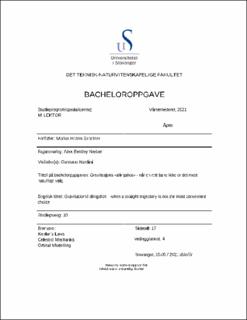| dc.contributor.advisor | Nardini, Germano | |
| dc.contributor.author | Sandtorv, Marius Hamre | |
| dc.date.accessioned | 2021-09-07T16:26:22Z | |
| dc.date.available | 2021-09-07T16:26:22Z | |
| dc.date.issued | 2021 | |
| dc.identifier | no.uis:inspera:79012078:37361991 | |
| dc.identifier.uri | https://hdl.handle.net/11250/2774257 | |
| dc.description.abstract | I denne artikkelen har jeg vist at de empiriske resultatene til Johannes Kepler, beskrivende modeller av vårt solsystem basert på observasjoner gjort av Tycho Brahe, kan utledes fra Newtons bevegelsessetniger. Disse utledningene, som er basert på matematiske modeller, åpner for ny innsikt som var skjult av unøyaktighetene i Brahe's observasjoner.
Jeg har også vist at numeriske løsninger generert i Wolfram Mathematica har tilstrekkelig nøyaktighet til å modelere planetenes baner i minst en periode. | |
| dc.description.abstract | In this paper I have shown that the empirical results of Johannes Kepler, descriptive models of our solar system based on the observational data of Tycho Brahe, can be derived from the laws of motion later postulated by Newton. This derivation which is based on mathematical models, allows for newer insights which were obscured by the inaccuracies in Brahe's data.
I have also found that the numerical solutions of Wolfram Mathematica, while producing some errors, are accurate enough to model the orbits of planets for up to at least the time of their orbital period. | |
| dc.language | eng | |
| dc.publisher | uis | |
| dc.title | Gravitasjons «slingshot» - når en rett bane ikke er det mest naturlige valg. | |
| dc.type | Bachelor thesis | |
